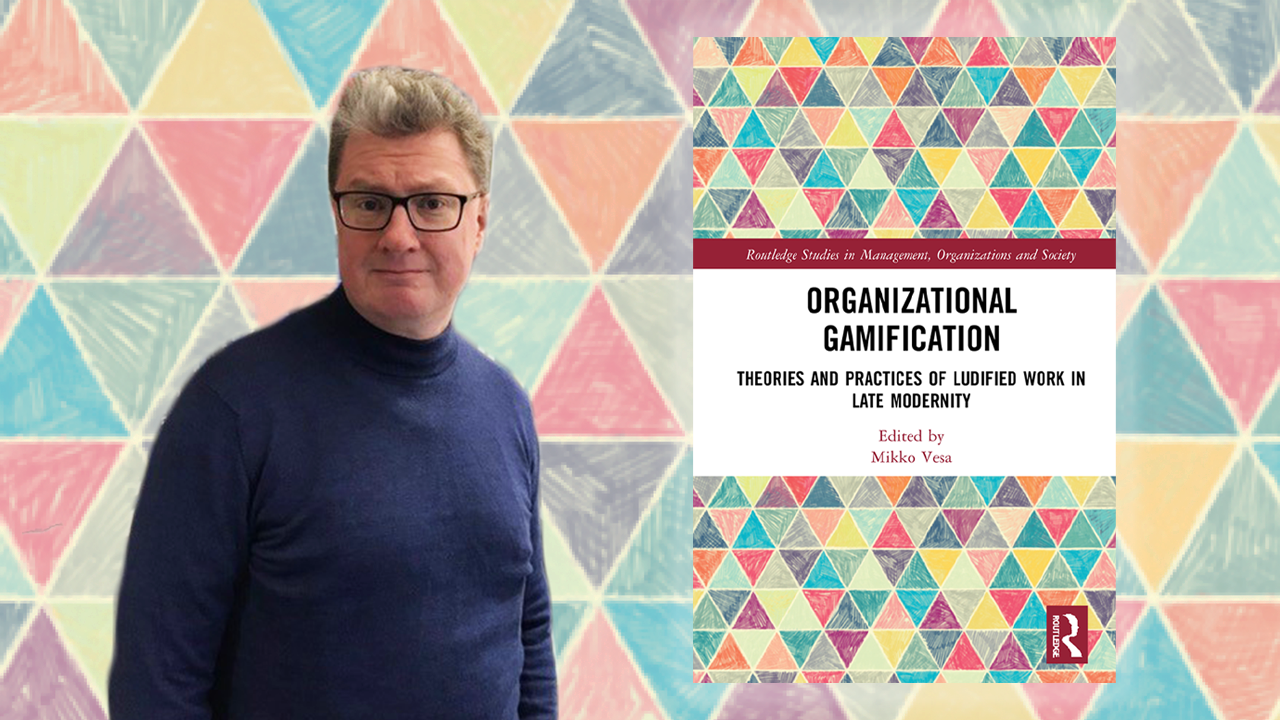The magic of playing

Fitness apps, money-saving planners, loyalty programs and language learning with a virtual teacher – we are used to games in all our areas of our life. But what does gamification mean in organizations? “Play and games are already accepted as a natural part of organizational life and we can find them in everything from mundane office mascots to complex simulations, Vesa lists examples of gamification in today’s organizations.
Vesa works as an Associate Professor of strategic management in the Department of Management and Organisation at Hanken. “The key argument of the book is that play and games should not be understood as management interventions”, he explains. “Rather, in contemporary organizations play and games often emerge naturally in peoples’ everyday interactions. They are core ingredients in creativity, innovation and entrepreneurship; all qualities cherished and sought after, in today’s organizations.”
Gamification means “concept that builds on the idea of infusing other activities with game and/or play-like qualities in order to enhance them somehow”, Vesa writes in Organizational Gamification, Theories and Practices of Ludified Work in Late Modernity, a book edited by him and published last month by Routledge.
He says that for gamification in corporate contexts and, consequently, work-life the idea is simply about infusing work with such qualities in order to enhance, itself variously understood, labor productivity.
The main benefits in bringing play and games into organizations is that free play allows us to explore or ‘play out’ challenging and complex problems, and in the process to both discover solutions as well as possible ethical implications of our actions, he tells.
Play cannot be forced
A Dutch historian Johan Huizinga wrote already in the 1950’s that play is an act of freedom that is done for itself with no exterior motive. Thus, as Vesa points out, when talking about games and gamification in the context of organizations, it is important to remember to respect play. It cannot be forced on anyone because play eschews control.
Gaming is not all innocent, though. “There are two major caveats”, Vesa says. “First, if play is forced onto people, as some gamification interventions do, the outcomes can be unpredictable and outright detrimental for performance. Secondly, play has a unique moral hazard associated with it. If people are ‘stuck in the play’, they might lose base with the real world implications of their decisions. To avoid this, play should be properly debriefed.”
Wise words to remember for managers, as we already live in a gamified world.
The world of ‘what if?’
Gamified forms of organizing already exist e.g. in crowdsourcing. It is also a powerful tool for general e-participation. However, personally Vesa sees the most promising avenue of gamification in re-introducing strategic thinking into organizations that have too long mixed operational efficiency with strategic thinking.
Playing has always tempted people and helped them to cross the lines beyond daily thinking. “Play and games are the world of ‘what if?”; of scenarios and simulations”, as Vesa puts it. “Being able to think out of the box is especially important when navigating through disruptions such as the Covid 19 pandemic.”
Organizational Gamification, Theories and Practices of Ludified Work in Late Modernity contains 13 texts by researchers that examine the practice of gamification, the use of game design elements in non-game contexts, specifically as an organization and management research problem.

